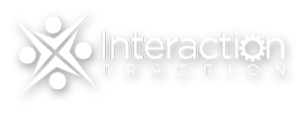Diversity has been a professional buzzword for decades now, and as a response, most companies have instituted some form of mandatory diversity training. However, despite the big push from corporate America, in many cases, this training isn’t working. In a study of 829 U.S. companies over three decades, Harvard Business Review reports that diversity training didn’t have any positive effects on the workplace. In some cases, the training actually had negative effects, leading to less diversity in management. The results seem baffling at first, but a closer look shows why this approach was ineffective.
In its early stages, diversity training quickly garnered a reputation for placing blame on white professionals. It was more about how they had negatively impacted employees of color and how they could right the ship. As expected, this angle didn’t excite the workforce.
Furthermore, diversity training is often filled with unrealistic scenarios, focuses too heavily on political correctness, and reads as inauthentic. It teaches employees how to respond to lack of diversity but not how to encourage more of it. This type of training omits inclusion.
This isn’t to say that diversity training isn’t still important—it most certainly is. But it needs to change. Effective diversity training should stop separating people into silos and instead encourage diverse collaboration. When people from different backgrounds work together, the benefits of diversity and inclusion are immediately clear. “My team members worked with smart, diligent professionals from across the globe, and mutual respect grew organically,” writes Forbes’ Victor Lipman. His team’s approach to diversity was focused almost exclusively on finding the value in teamwork.
Instead of amplifying what makes your employees different, your diversity training should focus on celebrating and respecting individuality, abandoning harmful labels, and bringing cross-functional, and if applicable global, teams together.
Here are 5 Tips for more effective inclusion training
- Use up-to-date and industry relevant scenarios. Examples of overt or exaggerated instances of bias tend to fall flat. Even where the beliefs still exist, fewer and fewer people display this type of behavior in the workplace. Instead, use more complex and subtle scenarios that are more likely to occur, and give employees more concrete ways of identifying and dealing with these instances.
- Don’t play the blame game. There is no way to get around the historical realities of this country, so a certain amount of historical context will be a part of many if not most diversity training programs. However, the focus should be on where do we go from here. True diversity is all-inclusive…meaning that everyone – yes, even white men – gets to be a hero in this story. Together, employees from all backgrounds can explore where their unique perspective fits into solving business objectives.
- Teach employees to identify and counter Micro-Aggressions. Micro-Aggressions are the very subtle and everyday slights and indignities often faced by underrepresented and/or marginalized groups. Comments like “She’s qualified, but we may not want to risk giving her the promotion — she’s still in her child-bearing years,” does more than just cheat a valued employee out of a promotion and the organization out of needed talent — it sends a clear message that women are not valued, forcing many women to seek more sophisticated and inclusive employers. Another example “You’re so Articulate” heard by too many people of color puts forth a racially charged underlying message that people of color are less intelligent and are not expected to have a good command of the language. While these comments seem small — think of how you’d feel after 15 years on the job and people are still in utter shock that you can put 2 sentences together! Introduce micro-aggressions and PRACTICE ways of stopping them in their tracks.
- Provide a safe space for dialogue. In order for training to be effective, every single person in the room must feel safe to express their opinion, no matter what that opinion is. Remember the goal isn’t change people’s perspective (although it is often a nice byproduct) or have a multi-cultural Kum-by-ya moment. The goal is to lay the groundwork and continue a build a culture that values individual origins and feeds off of a respect for others. This can be accomplished whether or not we agree on every point.
- If you see it — say it! Part two of creating a safe space for dialogue is giving employees tools for calling out bias remarks and actions in a productive way – no matter the source. The key here is to be candid but kind. And, you do not need to be part of the impacted group to speak up! We can do so by quietly pulling a person aside and letting them know a comment was insensitive, we can use humor to diffuse the situation, or we can simply practice things like kicking ideas back to their original owners. So,the next time you see someone being constantly interrupted in a meeting, or whose idea was just highjacked by someone else in the room — kindly and confidently say something like “Yes Jim, I’ve been thinking about it since Janet brought this idea forward a few minutes ago, and I agree, it is a great idea…Bravo Janet!”
If you are interested in learning about the collaborative and customized approach Interaction Traction takes to help build inclusive cultures, contact us.




Leave a Reply
Want to join the discussion?Feel free to contribute!